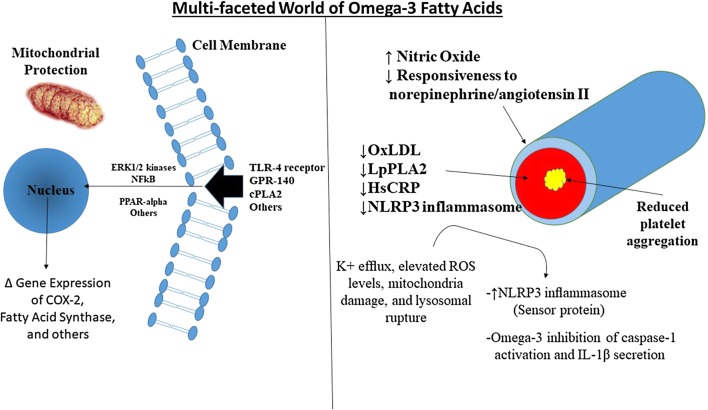Fig. 1.
Multi-Faceted World of Omega-3 Fatty Acids. 1) Improved endothelial function seen with omega 3 fatty acids [102] in addition to reduced response to norepinephrine and angiotensin II. Moreover, there is limited evidence available that there is improvement in left ventricular function [103]. 2) Improvement in inflammation noted by a reduction in markers of inflammation including oxidized LDL (ox-LDL), Lipoprotein-associated phospholipase A2 (LpPLA2) and High-sensitivity C-reactive protein (hsCRP) seen in the ANCHOR Trial [104]. 3) Reduction in platelet aggregation has been reported in a number of small studies [59]. 4) Omega-3 fatty acids have shown to prevent inflammation and metabolic disorder through inhibition of inflammasome activation [105]. TLR4 toll-like receptor 4, GPR-140 G-protein coupled receptor, cPLA2 cytosolic phospholipase 2 ERK1/2 = protein-serine/threonine kinases involved in the ras-raf-mek-erk pathway transduction cascade involved in gene transcription NLRP3 Inflammasome = signal complex which activate inflammatory caspaces and IL-β to upregulate inflammation. ROS reactive oxygen species

